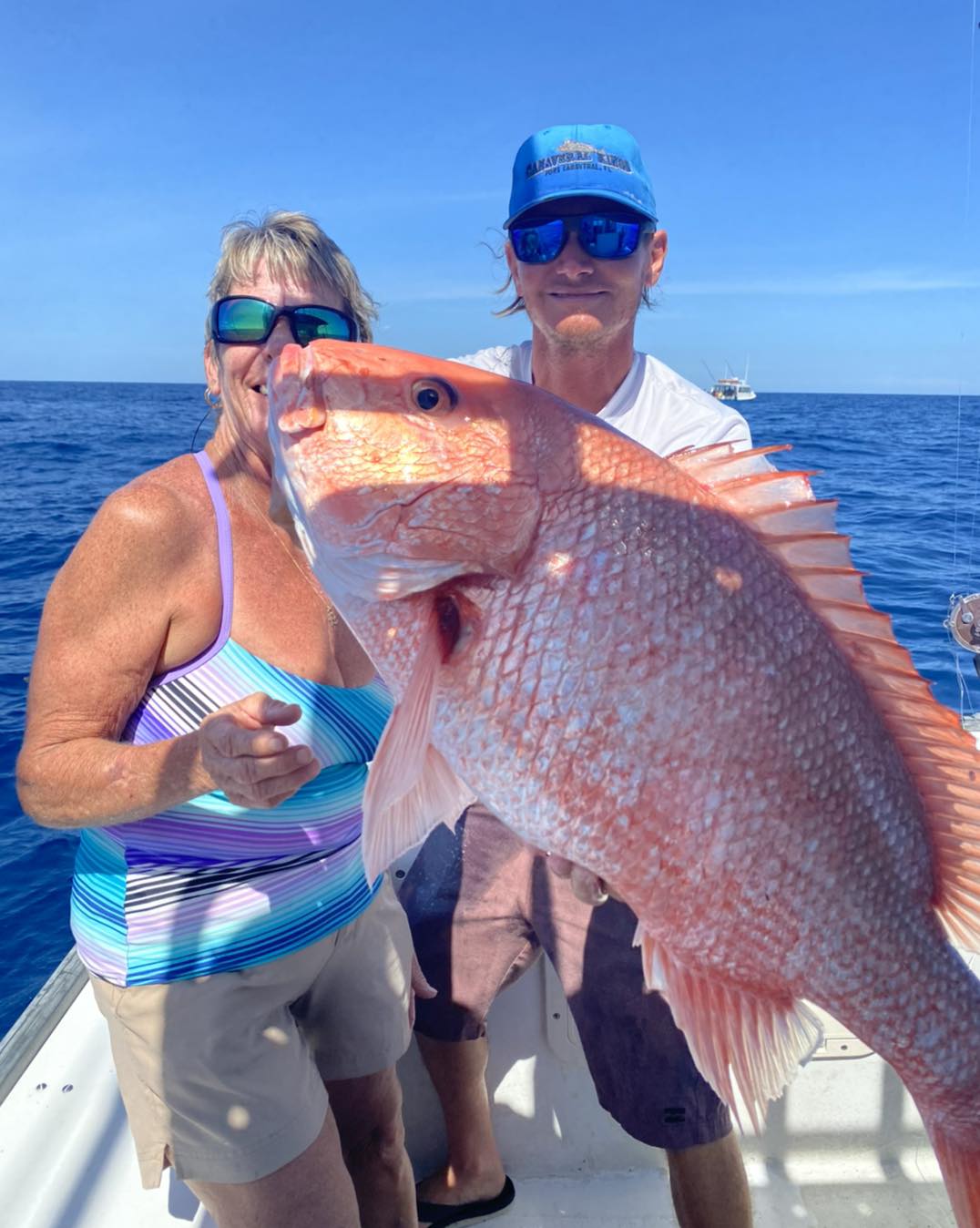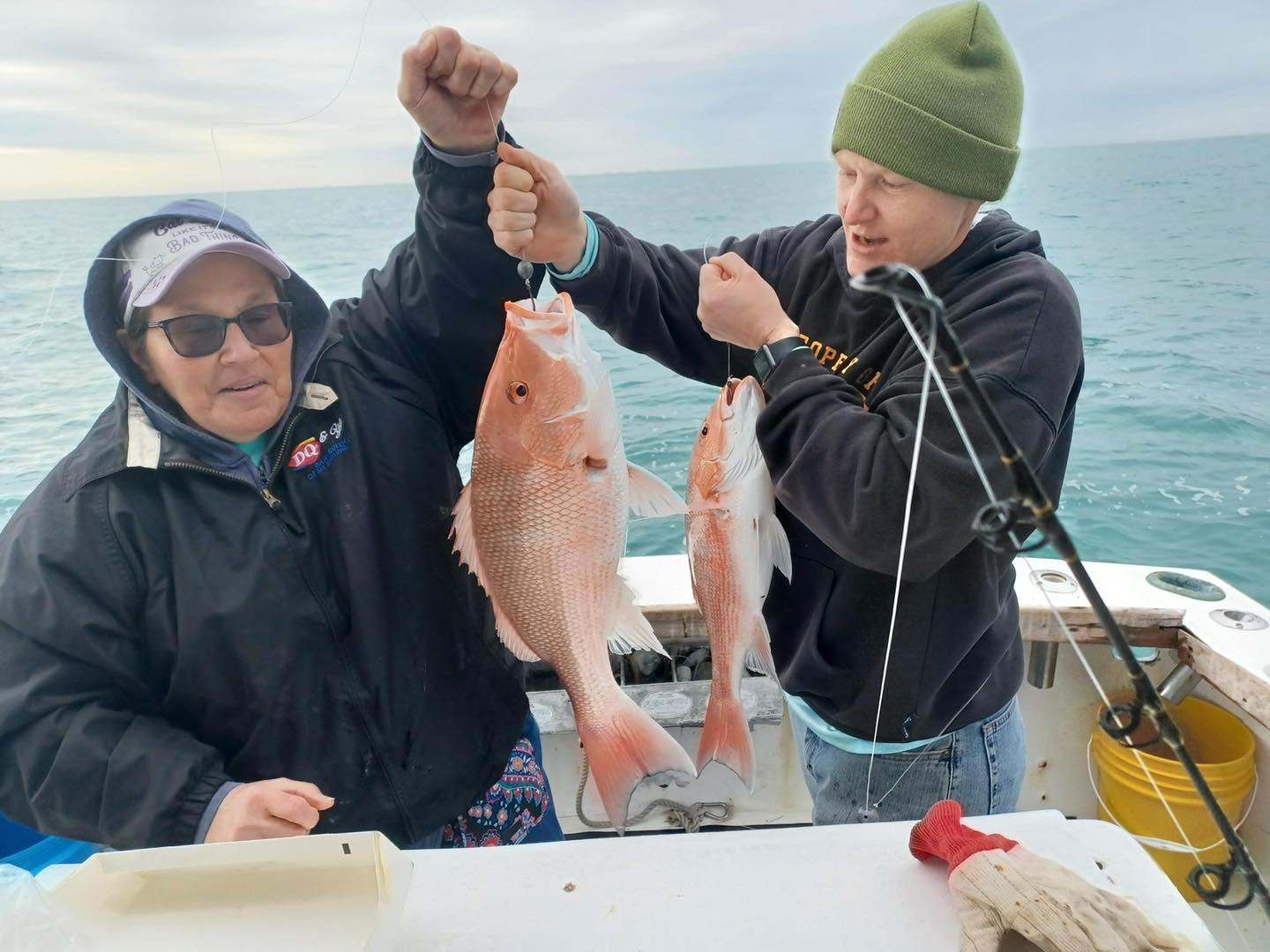Last Updated on February 9, 2024 by Eric
Port Canaveral is not just a hub for cruises and shipping; it’s also a premier fishing destination on Florida’s Space Coast. Nestled between the Atlantic Ocean and the Banana River, Port Canaveral offers a unique blend of deep-sea and inshore fishing opportunities, making it a versatile playground for anglers of all skill levels. Its proximity to the Gulf Stream and the diverse habitats, including reefs, wrecks, and ledges, create the perfect environment for a variety of marine life, especially snapper species.
Why Port Canaveral Stands Out for Snapper Fishing
The waters around Port Canaveral are teeming with life, thanks in part to the careful balance of natural and artificial reefs. These structures provide shelter, breeding grounds, and feeding opportunities for numerous species, with snappers being among the most sought-after by anglers. The variety of snapper species available, combined with the port’s accessible location, makes it an unmatched destination for both recreational and sport fishing.
The Three Pillars of Port Canaveral’s Snapper Fishing
Focusing on the three most celebrated types of snapper—red, mutton, and yellowtail—this guide delves into what makes each species unique and coveted by anglers. Beyond their vibrant colors and challenging fights, these snappers play significant roles in their ecosystems and the local fishing culture. Understanding their habits, preferred habitats, and the best times to target them can significantly enhance your fishing experience in Port Canaveral.
- Red Snapper: Prized for their fight and flavor, red snappers are a symbol of deep-sea fishing adventures in Florida. Targeting these requires knowledge of their preferred depths and seasonal movements, especially considering their regulated fishing windows.
- Mutton Snapper: Known for their elusive nature and the challenge they present to even seasoned anglers, mutton snappers are often found around the deeper reefs and wrecks. Their vibrant colors and impressive size make them a trophy for many.
- Yellowtail Snapper: Perfect for light tackle enthusiasts, yellowtail snappers offer a different kind of fishing experience. Often found in shallower waters around reefs, they’re known for their schooling behavior and the visual spectacle they provide.
Conservation and Sustainability
As you explore the rich waters of Port Canaveral, it’s crucial to approach snapper fishing with a mindset geared towards conservation and sustainability. Each of these snapper species faces various degrees of fishing pressure and habitat challenges. Adhering to regulations, practicing catch and release when appropriate, and staying informed about conservation efforts are vital steps in ensuring that Port Canaveral remains a vibrant fishing destination for generations to come.

Red Snapper
The Red Snapper, known scientifically as Lutjanus campechanus, stands out as one of the most coveted game fish in Port Canaveral for its spirited fight, exceptional flavor, and substantial size. These attributes make it a prized target for both novice and experienced anglers alike.
Distinctive Features and Size
Red Snappers are easily recognizable by their vibrant red to pinkish skin, sleek body, and large, diamond-shaped scales. They possess a firm texture and a mild, nutty flavor that is highly prized in culinary circles. Adult Red Snappers in Port Canaveral waters often weigh between 10 to 30 pounds, with some exceptional specimens exceeding 20 pounds, reflecting their healthy and abundant food sources in this region.
Habitat Preferences and Feeding Habits
Preferring the structured seafloor, Red Snappers make their homes around reefs, both natural and artificial, as well as shipwrecks and rocky outcrops. These environments offer not just protection but a rich variety of prey, including smaller fish, shrimp, crabs, and squid. Their tendency to congregate in specific areas, especially those with significant underwater structure, makes them a predictable target for seasoned anglers.
Fishing Techniques and Tips
When targeting Red Snapper, successful anglers often employ bottom fishing techniques using heavy tackle to withstand the Snappers’ powerful fight and the rough underwater terrain. Live bait, such as pinfish or mullet, is particularly effective, as is fresh cut bait. Positioning the bait close to the reef structures or wrecks where Red Snappers feed increases the chances of a catch. Anglers should be prepared for the Red Snapper’s initial strong run once hooked, requiring both skill and patience to land.
Regulatory Insights
Due to their popularity and past overfishing pressures, Red Snappers are subject to strict regulations designed to ensure their population remains sustainable. In Port Canaveral, the window for keeping Red Snapper is limited to a few select days in July, underscoring the importance of these measures. Anglers must stay informed about current size and bag limits to contribute to the species’ long-term health and availability.
Why Red Snapper Stands Out
Beyond their appeal as a sport fish, Red Snappers play an essential role in the marine ecosystem of Port Canaveral, serving as both predator and prey within their habitat. Their presence indicates a healthy, balanced marine environment, which benefits a wide range of species beyond just the Snappers themselves.

Mutton Snapper
The Mutton Snapper (Lutjanus analis) distinguishes itself as a versatile and sought-after species among the snapper family, thriving from the tropical waters of Florida down to South America. Esteemed for its culinary value and the thrill it offers on the line, this species garners attention from both commercial fisheries and recreational anglers.
Unique Physical Traits
Sporting a sleek, elongated body, the Mutton Snapper is a visual marvel with its vivid color palette ranging from red to pink and even to subtle orange hues. Notably, its appearance is accented with distinctive blue streaks across its head, back, and sides, coupled with orange-tinted fins, making it one of the more colorful inhabitants of reef environments. Its large mouth is not just a striking feature but also a testament to its predatory lifestyle, enabling it to consume a variety of prey.
Habitat and Feeding Patterns
Mutton Snappers are predominantly bottom dwellers, favoring the complex structures of coral reefs, wrecks, and rocky bottoms. These habitats are not just shelters but also hunting grounds where Mutton Snappers prey on small fish, crustaceans, and other invertebrates. Their adaptability allows them to thrive in a range of depths, from shallow flats to deeper reef areas, showcasing their versatility as a species.
Angling for Mutton Snapper
Known for their spirited resistance when hooked, Mutton Snappers present a formidable challenge to anglers. Their aggressive nature and the environments they inhabit require specific strategies for successful fishing. Techniques often involve bottom fishing with live or cut bait, with crabs, shrimp, and small fish being particularly effective in enticing them. The use of fluorocarbon leaders and sharp, sturdy hooks can improve success rates, especially in the clear waters around reefs where these snappers are more cautious.
The Spawning Season
The peak season for targeting Mutton Snapper in Port Canaveral aligns with their spawning period, from May through August. During this time, particularly in the months of July and August, Mutton Snappers congregate in larger numbers, making them more accessible to anglers. This period not only offers the best chances for catching larger specimens but also underscores the importance of responsible fishing practices to ensure the sustainability of their populations.
A Prize Catch
Mutton Snappers, with some individuals reaching weights of over 25 pounds, are not only a test of an angler’s skill but also a prized catch for its excellent taste. Their firm, white flesh is highly valued in culinary circles, making them a favorite target for those looking to combine the challenge of sport fishing with the rewards of a gourmet meal.

Yellowtail Snapper
Yellowtail Snapper (Ocyurus chrysurus) is a gem among the snapper species, highly regarded for its culinary value and the enjoyment it brings to the angling community. With its striking appearance and schooling nature, it presents a unique fishing experience in the waters around Port Canaveral.
Distinguishing Features
The Yellowtail Snapper is instantly recognizable by its bright yellow lateral line, which contrasts beautifully against its blueish or olive sides adorned with yellow spots. This coloration not only makes the Yellowtail Snapper visually appealing but also serves as camouflage among the reef’s nooks and crannies. Its pale white belly and the vibrant yellow tail add to its distinctive look, making it a favorite subject for underwater photography.
Size and Culinary Qualities
Typically, Yellowtail Snappers grow to a maximum length of about 30 inches, though individuals weighing more than 5 pounds are rare. This size makes them a perfect catch for a meal, with their white, flaky flesh renowned for its mild yet delicious flavor. The versatility of Yellowtail Snapper in culinary preparations adds to its appeal, with the fish being suitable for a range of cooking methods, from grilling and baking to frying. Its tender and juicy meat ensures that it remains a sought-after catch for both recreational and commercial fishermen.
Habitat and Schooling Behavior
Preferring the warm, clear waters around coral reefs and rocky areas, Yellowtail Snappers are typically found in schools, making their way through these complex habitats in search of food. Their diet mainly consists of small fish, shrimp, and other invertebrates, which are abundant in the reef ecosystems of Port Canaveral. The social nature of these fish not only makes them a fascinating sight for snorkelers and divers but also provides anglers with the opportunity to catch multiple fish in a single outing.
Fishing Tips for Yellowtail Snapper
Fishing for Yellowtail Snapper requires a blend of patience and strategy. Light tackle and small hooks are preferred, with live or cut bait such as shrimp or squid proving effective. Chumming the water can also attract schools of Yellowtail Snapper closer to the boat, increasing the chances of a successful catch. Given their keen eyesight, using lighter leaders and presenting the bait naturally can make a significant difference in enticing these cautious fish.
Best Times for Fishing
While Yellowtail Snapper can be caught throughout the year in Port Canaveral, their activity peaks between March and November. During these months, the warmer waters and increased food availability encourage more active feeding behavior, making them easier to target. Even during the cooler months, Yellowtail Snappers remain in the area, providing anglers with year-round fishing opportunities.
Your Go-To for Snapper Fishing in Port Canaveral
If you’re aiming to catch snapper in Port Canaveral, you’ve got a solid shot at landing red, mutton, or yellowtail snapper any time of the year. Knowing when they’re most likely to bite and where they hang out is key to a successful day on the water.
Looking to get out there and try your luck with snapper? Canaveral Kings Fishing Charters knows these waters well. We’re here to help you target these snappers, giving you a straightforward shot at bringing them in.
Ready to set up a trip? Reach out or book with us online. We’re here to get you on the water, targeting the snapper you’re after.


